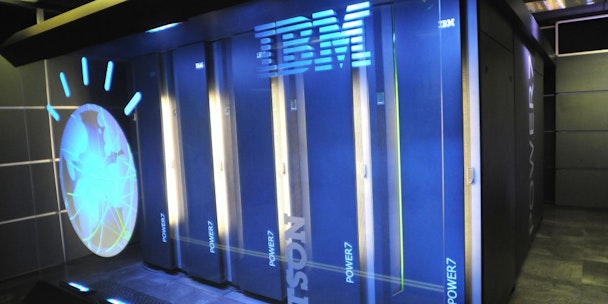Why man and machine must work together as Watson AI infiltrates media buying
Last week IBM announced that they have been using Watson (their AI intelligence programme) with success in buying programmatic media, quoting that they had seen significantly increased performance as a result.

In their example, IBM claimed a reduction in cost per click by as much as 71% - impressive stuff.
But it should come as no surprise that Watson is capable of optimising media against a KPI better than any human or algorithm can. After all, Watson has far greater processing power than any other system in the world, and can therefore analyse more variables and at quicker speeds, enabling it to better predict the media that most regularly delivers the outcome desired.
With many people concerned about the job role of humans in this new AI-led world, I think we can look at the early uses of AI and Watson itself to understand how humans will eventually work alongside AI in programmatic advertising, combining the strengths of both parties.
IBM’s first iteration of AI was Deep Blue, a chess playing system developed in the 90’s that eventually beat Gary Kasparov, the best human chess player in the world. Following his defeat, Kasparov went on to pioneer a new variation on the game called advanced chess, where human and AI teams compete against each other.
Fast-forward 20 years and these human AI teams are capable of beating any individual human player in the world. These advanced chess teams succeed by having a human lead the play, with the AI calculating probabilities of success – with the human then revising strategy accordingly.
In medicine, Watson itself is being used by doctors to deliver better treatment. So again, human and AI teams are seen to be effective. Doctors are great at diagnosing symptoms, whilst Watson is better at analysing medical histories. Together, they produce a better outcome than any of them could do working individually.
And this is most likely how AI and programmatic advertising will play out. Any experienced media practitioner will know that reducing the cost per click from display advertising is not necessarily an effective marketing approach. After all, the easiest way of reducing CPC’s is to buy media that delivers accidental clicks or, worse yet, fraudulent ones.
It is likely that IBM will soon use Watson to optimise towards a more business-focussed KPI – that being a CPA. But even this is fraught with potential problems. The lowest CPA’s from display media (in any attribution model) come from placing ads in front of users who are already likely to convert. A strategy like this produces great CPA’s in display, but very limited business growth. In this instance the ad is not the cause of the sale – it is piggy-backing existing behaviour.
With media we should be striving to create sales, not just track them. Humans are best placed to understand which sales were positively influenced by media, and use these to guide AI-programmatic systems like Watson to deliver the best possible outcomes. Using a combination of KPI’s, tailored to the brand, strategy, audience, device and creative message will always produce the best business outcomes.
Where humans will add most value to programmatic is in understanding the customer journey and how comms can work to accelerate the journey and provide business growth. Determining the KPI’s that best reflect the value add of media at each stage of the journey is akin to the chess player’s strategic mind. To get the best results from programmatic, we need to think like Kasparov. Rather than allowing machines 100% control, we should instead think about how we can work together.
Aidan Mark is a digital performance strategist at Arena Media

